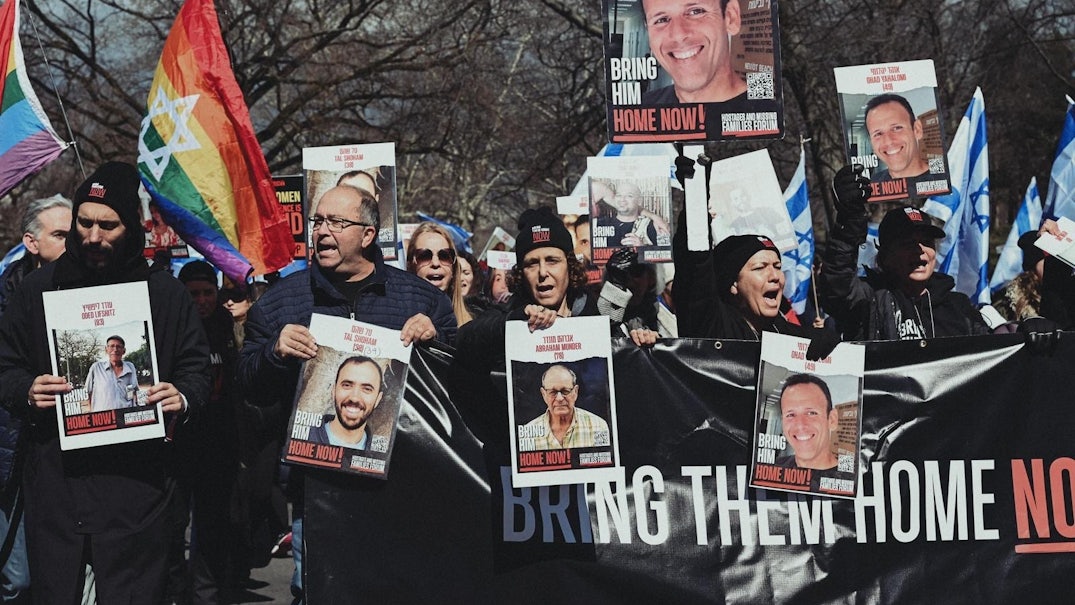On the morning of October 7, Bat-Sheva Yahalomi, her husband Ohad, and their three young children, fell into the hands of Hamas terrorists.
The chilling story was recounted to me and a group of women leaders recently by Efrat (Yahalomi) Avsker, Bat-Sheva’s sister-in-law, during our visit to the Israeli consulate. We were there to hear from some of the released hostages and their family members and to view the raw footage of the October 7 massacre.
Efrat was in New York to draw attention to her brother Ohad, who is presumed to be held captive in Gaza. She recounted the day’s events.
Terrorists broke into the family’s home in Kibbutz Nir Oz, Israel, and shot Ohad in his arm and leg. As he lay injured, they sped off with Bat-Sheva and their two daughters, 10-year-old Yael and 20-months-old Liel, on one motorcycle, and their 12-year-old son, Eitan, on another.
As they neared the breached border fence, the sight of an IDF tank up ahead threw the driver carrying Bat-Sheva and her daughters into panic. Their motorcycle tipped over and the terrorist ran off. The motorcycle carrying Eitan crossed into Gaza.
In that moment, Bat-Sheva faced an agonizing decision reminiscent of Sophie’s Choice: flee and save her daughters or attempt to reunite with her son. She chose to escape.
In their pajamas and barefoot, Bat-Sheva, carrying baby Liel and holding Yael’s hand, made a perilous three-and-a-half-hour journey back toward the Kibbutzim. During their escape, they encountered moments of sheer terror, including an instance where they had to lay still on the ground and play dead.
Navigating through the fields to avoid the road overrun by terrorists, Bat-Sheva and her daughters ultimately reached the Kibbutz where IDF soldiers rescued them. Shortly thereafter, they learned that Ohad, the father, had also been kidnapped.
Twelve-year-old Eitan was released in November after 52 days of captivity. During his ordeal in Gaza, he endured psychological torture, Efrat told us, including being forced to watch the disturbing footage of October 7 atrocities.
Initially kept in one location, Eitan was later moved to another where he was held with other hostages from his Kibbutz, including other children. The captors would put guns to the children’s heads to stop them from crying, Efrat said. Eitan was misled to believe that Israel had fallen, his father was dead, and his mother and sisters were hostages. It wasn’t until just before his release that he learned he would see his mother.
Now, the family awaits the fate of Ohad. In January, Al-Nasser Salah al-Deen Brigades, a militant group associated with Hamas, released a propaganda video which appears to show Ohad injured and being treated. The caption claims that he was killed by an Israeli strike.
Of the 253 people kidnapped on October 7, 134 are still held by Hamas, with 33 confirmed dead, according to Eylon Levy, Israeli government spokesman. Hamas claims it doesn’t know which hostages are dead or alive.
To mark their 150 days of captivity, Efrat, joined by some 3,000 demonstrators at New York City’s Central Park on Sunday, called for the release of the hostages at a rally organized by the Hostage Families Forum and a broad coalition of political, religious, and social organizations.
Meanwhile, in Tel Aviv and across Israel on Saturday, over 20,000 anti-Netanyahu government protesters demanded “elections now” and an immediate deal for the release of hostages.




























